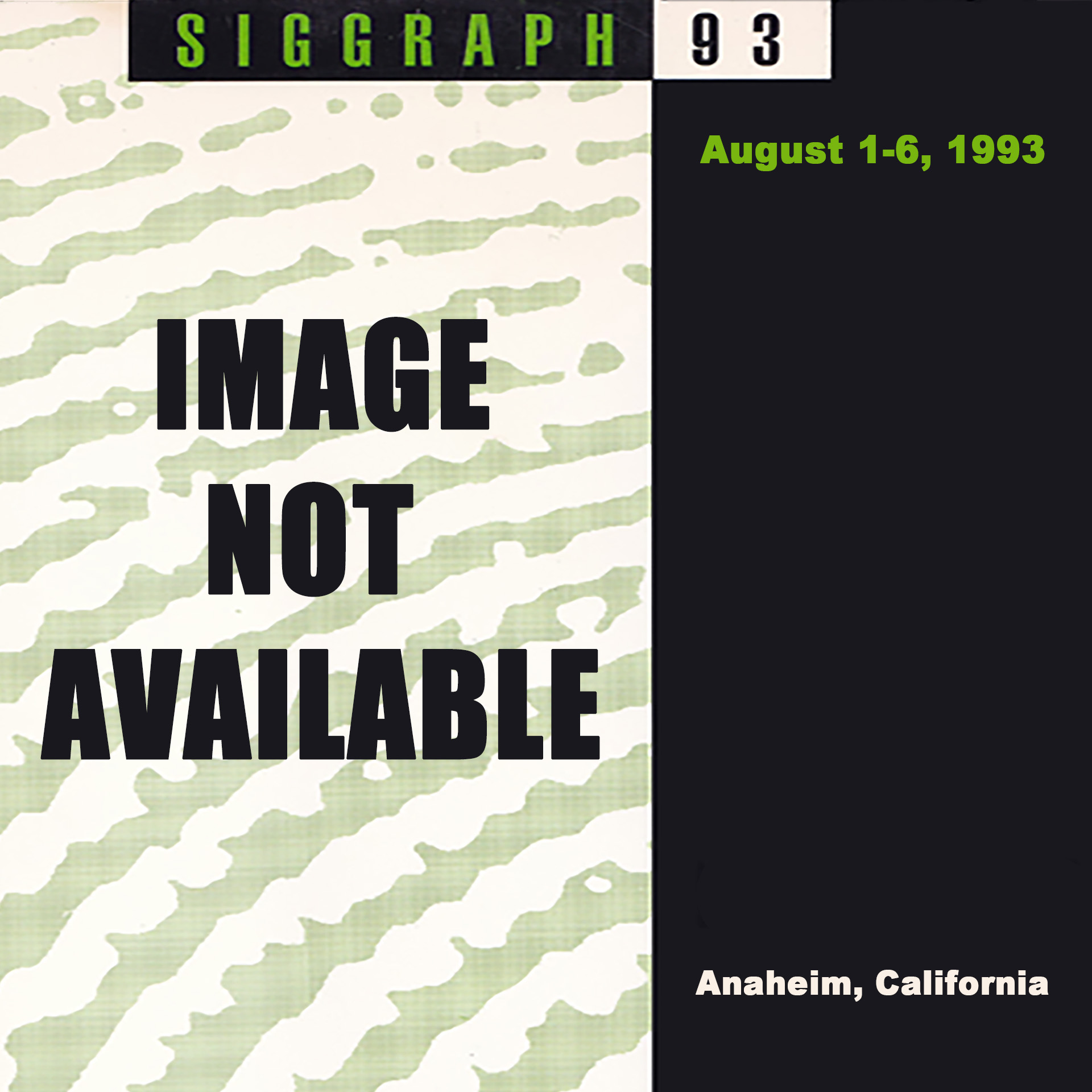“VIEW: an exploratory molecular visualization system with user-definable interaction sequences” by Bergman, Richardson, Richardson and Brooks Jr.
Conference:
Type(s):
Title:
- VIEW: an exploratory molecular visualization system with user-definable interaction sequences
Presenter(s)/Author(s):
Abstract:
VIEW is an exploratory visualization system for studying the structures of molecules. The system supports a high degree of complex
user interaction with the image. Visualizations are constructed by
selecting drawing tools from a library. Each tool uses parameters
obtained from interactive selection of on-screen geometry by the
user, and from a molecular database.
The system is based on a tight coupling of on-screen geometry with
the underlying database. Using these links, tools can create truescale drawing elements that are constrained to database values.
VIEW is highly extensible by the user or a paraprogrammer associated with the user. Drawing tools are written in a C-like programming language with constructs for managing databases, constructs
for creating and altering geometry, as well as standard statements
such as If-Else and For loops.
An event-definition mechanism allows the user to describe actions to
be performed when keys are depressed or dials turned. In addition, the
user is able to specify conditional events – actions that are to be taken
whenever a user-defined condition becomes true. These conditions
are automatically evaluated by the system as part of event processing.
Such conditional events allow simple simulations to be readily programmed. Applications of conditional events have included animations of protein binding activity, and an interactive “flashlight” which
highlights structures as a cursor is steered through a molecule.
The system includes a development environment complete with a
WYSIWYG editor, an interactive debugger, and a set of innovative
graphical debugging features
References:
1. B.H. McCormick, T.A. DeFanti, and M.D. Brown, eds., “Visualization in Scientific Computing,” Computer Graphics, Vol. 21, No. 6, Nov. 1987.
2. M. Pique, J.S. Richardson, and F.P. Brooks, Jr., “What Does a Protein Look Like?” Invited videotape presented at 1982 SIGGRAPH Conference, July 1982.
3. J.S. Richardson et al, “Looking at Proteins: Representations, Folding, Packing, and Design,”Biophys.J., Vol. 63, Nov. 1992, pp. 1186-1209.
4. Bergman, et al, “VIEW- Visualization Impromptu Evaluation Workbench,” abstract in J. Mol. Graphics, Vol. 6, Dec. 1988, pp. 223.
5. C. Upson et al, “The Application Visualization System: A Computational Environment for Scientific Visualization,”IEEE Computer Graphics & Applications, Vol. 9, No. 4, July 1989, pp. 30-42.
6. D.S. Dyer, “A Dataflow Toolkit for Visualization,” IEEE Computer Graphics & Applications, Vol. 10, No. 4, July 1990, pp. 60-69.
7. IRIS Explorer (TM) User’s Guide, Document Number 007- 1371-010, Silicon Graphics, Inc., Mountain View, CA, Jan. 1992.
8. B. Lucas et al, “An Architecture for a Scientific Visualization System,” Proc. Visualization ’92 (Oct. 1992), pp. 107-114.
9. T.C. Palmer, “A Language for Molecular Visualization,” IEEE Computer Graphics & Applications, Vol. 12, No. 3, May 1992, pp. 23-32.
10. J.P. Hultquist and E.L. Raible, “SuperGlue: A Programming Environment for Scientific Visualization,” Proc. Visualization ’92 (Oct. 1992), pp. 243-251.
11. W. Hibbert, C.R. Dyer, and B. Paul, “Display of Scientific Data Structures for Algorithm Visualization,” Proc. Visualization 92 (Oct. 1992), pp. 139-146.
12. T.J. O’Donnell and A.J. Olson, “Gramps- A Graphics Language Interpreter for Real-Time Interactive Three-Dimensional Picture Editing and Animation,” Computer Graphics (Proceedings ofSIGGRAPH 1981), Vol. 15, No. 3, Aug. 1981, pp. 133- 142.
13. M.C. Connolly and A.J. Olson, “Granny, a Companion to Gramps for the Real-Time Manipulation of Macromolecular Models.” Computers and Chemistly, Vol. 9, No. 1, 1985, pp. 1-6.
14. D.C. Richardson and J.S. Richardson, “The Kinemage: A Tool for Scientific Communication,” Protein Science, Vol. 1, 1992, pp. 3-9.




